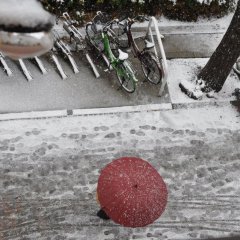Some places in Japan are so rich in legend and history that they seem to be frozen in a completely different era. Kasuga Taisha Shrine of Nara is one of those places. Visiting this area in Nara takes us back in time to a Japan long forgotten by most.
Located in the heart of Nara Park, Kasuga Taisha has looked over the country since the shrine's founding in 768. After experiencing a divine vision (Takemikazuchi-no-Mikoto), a member of the powerful Fujiwara clan ordered the construction of this famous shrine. In the vision a divine being appeared riding a deer, on the top of Mount Mikasa, given the purpose of protecting the ancient capital and its inhabitants.
Kasuga Taisha Shrine became even more famous during the period between 1871-1946 when it was appointed kanpei-taisha, which means it was recognized by the government as one of the most important shrines in Japan. Today, it appears on the UNESCO list of World Heritage historic monuments of ancient Nara with Todai-ji since 1998.
After passing through the entrance pathway lined with stone lanterns on each side, you will reach the Nanmon door. Once you pass this door, you enter the heart of a complex of sanctuaries with an atmosphere of incredible peace, especially in the early morning hours.
Lulled by the sound of prayers recited in the early morning in the Naoraiden Hall, it is a fun experience to simply get lost in the maze of vermilion buildings and bronze lanterns. Over 3,000 bronze and stone lanterns are scattered across the sanctuary, mostly the result of public donations dating from the Heian period.
Higher up behind the giant gate called Chumon, the Takemikazuchi-no-Mikoto, Futsunushi-no-Mikoto, Amenokoyane-no-Mikoto and Himegami deities are enshrined in the main shrine of Kasuga Taisha.
Everywhere you go within the sanctuary, you will feel the importance of nature. Cherishing the plants is indeed a divine decree of the Kasuga Taisha. Nature and plants are encouraged to grow freely, evidenced by the cut roof of the Naoraiden Hall with a large tree poking through. Nearby is a famous garden known as the "Garden of the Apple Tree" with an ancient tree offered by Emperor Takakura 800 years ago. The primary forest of nearby Kasuga-yama is also designated as World Heritage Site by Unesco.
Throughout the year, the sanctuary hosts many wonderful festivals. On February 3rd and August 14th–15th, over 3,000 lanterns of the sanctuary flare up during the Setsubun Mantoro and Obon Mantoro festivals. If you visit outside these festival dates you can still see a sneak peek of the festival inside the Fujinami-no-ya building where rows of lit lanterns await visitors throughout the year. Visitors can also attend many smaller festivals, dances or ceremonies in the Kasuga Taisha area (hundreds yearly) such as the "rice planting dance" I experienced myself on the 15th March.
Thanks to a complete renovation conducted every 20 years, the sanctuary maintains its dazzling beauty. Though worth a visit in any season, the flowering of the wisteria is a definite highlight. There is a veritable profusion of color when spring comes and this is the time when many visitors choose to visit. The wisteria are an emblem of the area and the flowers are widely throughout the sanctuary and its emblems.
If you want to avoid tourists and experience more of the natural sounds, you should plan your visit to the shrine in the morning. You will likely come across several deer and hear the soft chants of the priests. Twice a day the sound of the deer horn blows and indicates to the deer to gather in the park for their daily snack. This is a unique and entertaining experience not to be missed!



































